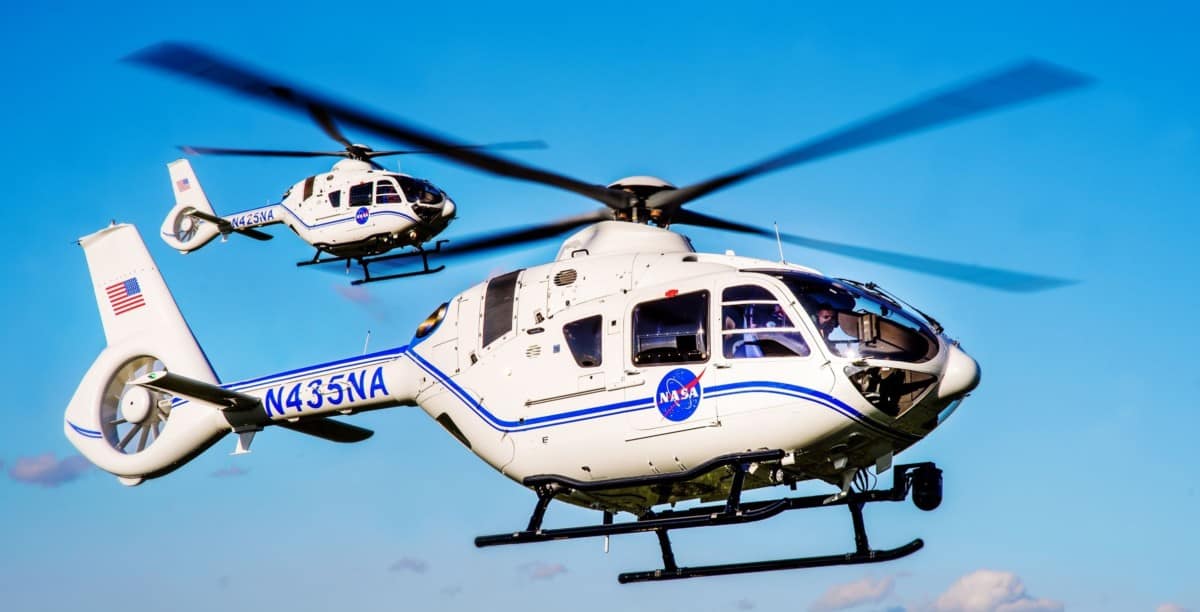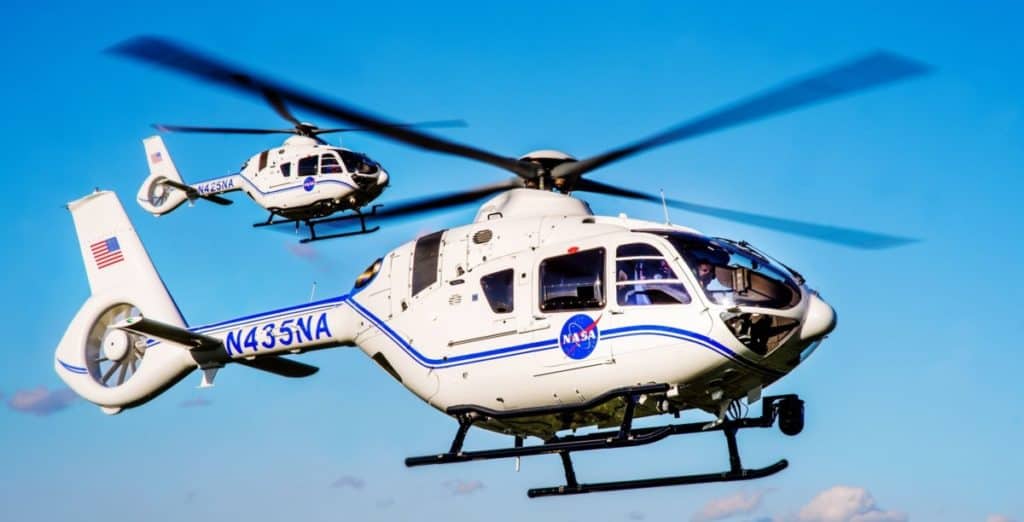
I was outside in the yard the other day when a helicopter with no tail rotor flew over and my 8-year-old son asked my why my helicopter had a propeller at the back and that one didn’t? A pretty keen eye and a good question too I thought. After telling him about the different tail rotor systems he seemed content and went back to playing soccer.
There are four main types of tail rotor or anti-torque systems on today’s helicopters. The most common is the multi-bladed rotor, the Fenestron from Airbus, the NOTAR from MD helicopters, then the helicopters with no tail rotor, like the chinook. Each counteracts the main rotor torque.
This got me thinking about all the different types of tail rotor systems and how I could easily explain the differences between each one.
What is a Helicopter Anti-Torque System?
Before we jump into the types of tail rotor systems I wanted to quickly explain what the tail rotor system is actually for as this will help you understand each type of system better.
A tail rotor system is designed to stop the helicopter from spinning around when it lifts off the ground. As the engine drives the main rotor in one direction, the fuselage wants to rotate in the opposite direction.
This is because of Newton’s 3rd Law:
For Every Action, There is an Equal and Opposite Reaction
Imagine drilling a hole in something and the drill bit sticks, the drill then wants to snap out of your hand – This is torque. To stop the drill snapping out of your hand you overcome it by holding it tighter and bracing your arm.
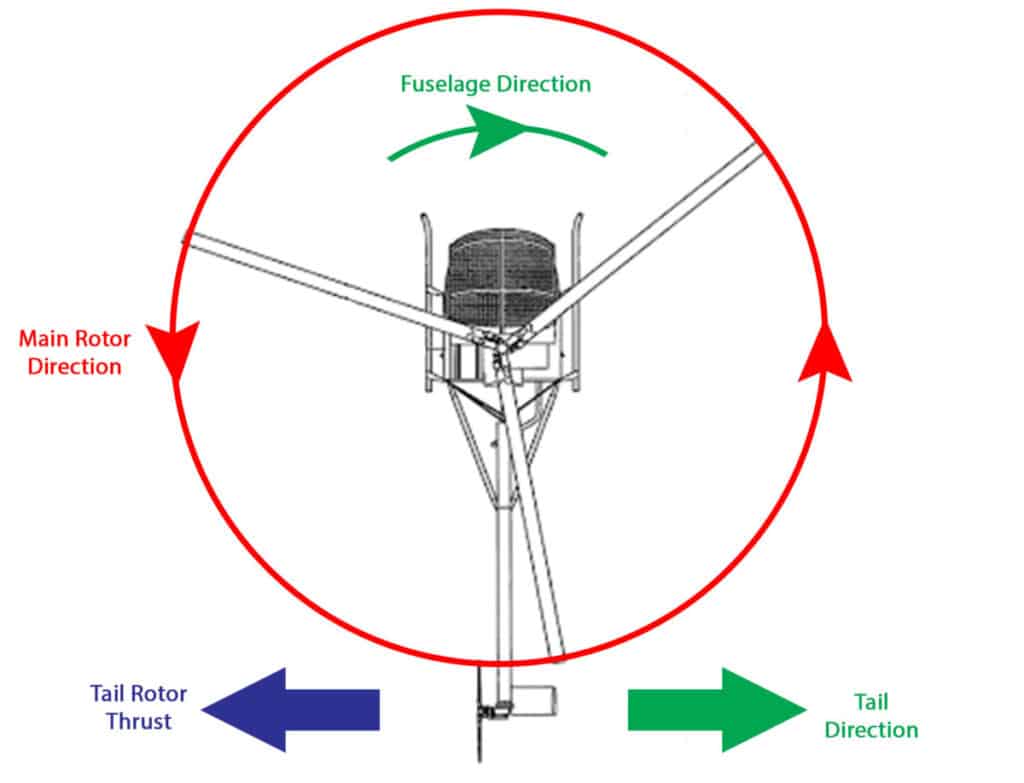
The tail rotor or Anti-Torque system creates thrust to push the tail boom in the opposite direction to which it wants to turn from the torque. When the thrust from the anti-torque system matches the torque being created by the main rotor the helicopter will remain pointing forward when it lifts off the ground.
Types of Helicopter Anti-Torque Systems
Now we know what the role of a tail rotor system is, let’s look at some of the incredible pieces of engineering that prevent today’s helicopters from spinning around!
There are four main types of helicopter Anti-Torque systems:
- Bladed Tail Rotor
- Fenestron Tail Rotor
- NOTAR
- No System
1. The Multi-Bladed System
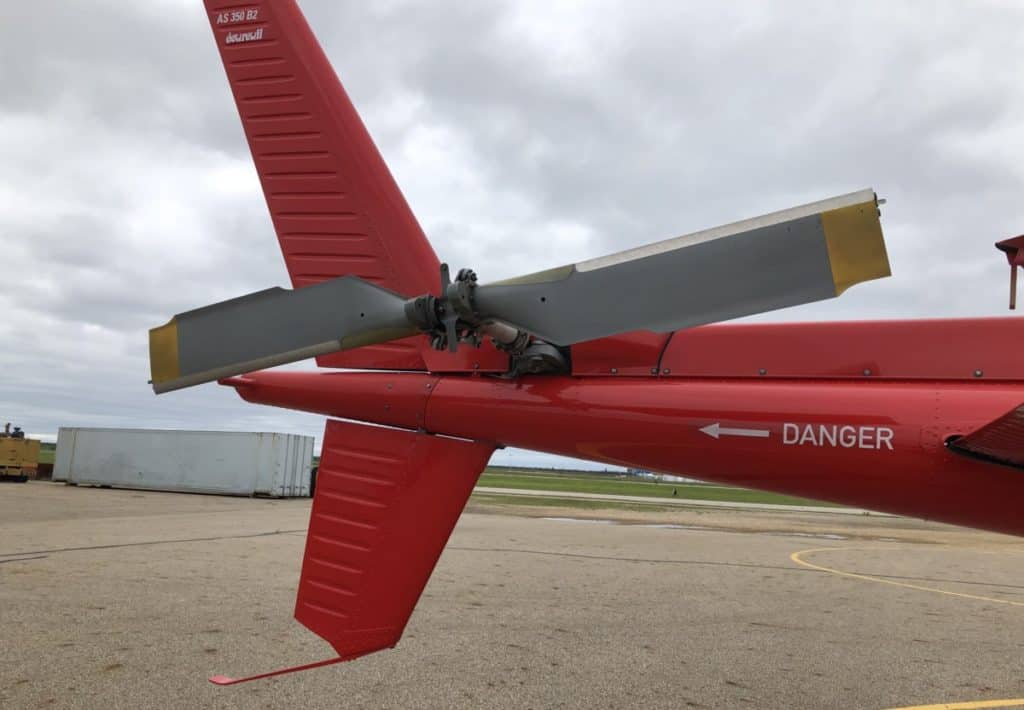
This is the most common type of anti-torque system that you will see on a helicopter. It comprises of two or more rotor blades that change pitch to adjust the amount of thrust they produce as a unit.
The pilot controls the pitch of the tail rotor by pushing on the foot pedals. Push on the left pedal it adjusts the pitch and turns the nose of the aircraft to the left.
The pitch either increases and creates more thrust to turn the helicopter against the main rotor direction or the pitch decreases and allows the torque to pull the nose of the helicopter in the same direction of the main rotor blade’s direction.
Various helicopter manufacturers have the main rotor going in a clockwise rotation while others rotate it in an anti-clockwise direction. Pilots call the pedal that moves the nose against the torque the ‘Power Pedal’ as it requires power from the engine to overcome the torque.
- In a Bell, MD, Robinson, or Leonardo helicopter, the Power Pedal is the Left Pedal
- In a Eurocopter/Airbus helicopter, the Power Pedal is the Right Pedal
Some helicopters may have more than two tail rotor blades and this is because they need to produce more thrust to counteract the torque. The more powerful a helicopter engine/s are, the more thrust needs to be produced by the tail rotor.
One of the easiest ways to get more thrust is to add more tail rotor blades.

Join My Newsletter & Get Great Tips, Information and Experiences To Help You Become a Superb Pilot!
If the manufacturer of a powerful or heavy helicopter just used two blades, the blades would have to be considerably larger to produce the same amount of thrust. The larger blades could become an issue when lifting and landing the machine, especially out in the field.
As a helicopter lifts off it generally lifts off with the tail hanging lower than the fuselage because of weight & balance. A large tail rotor could easily come into contact with brush or vegetation when used out in the field, therefore it is better to use 3/4/5 tail rotor blades of a smaller length.
2. The Fenestron System
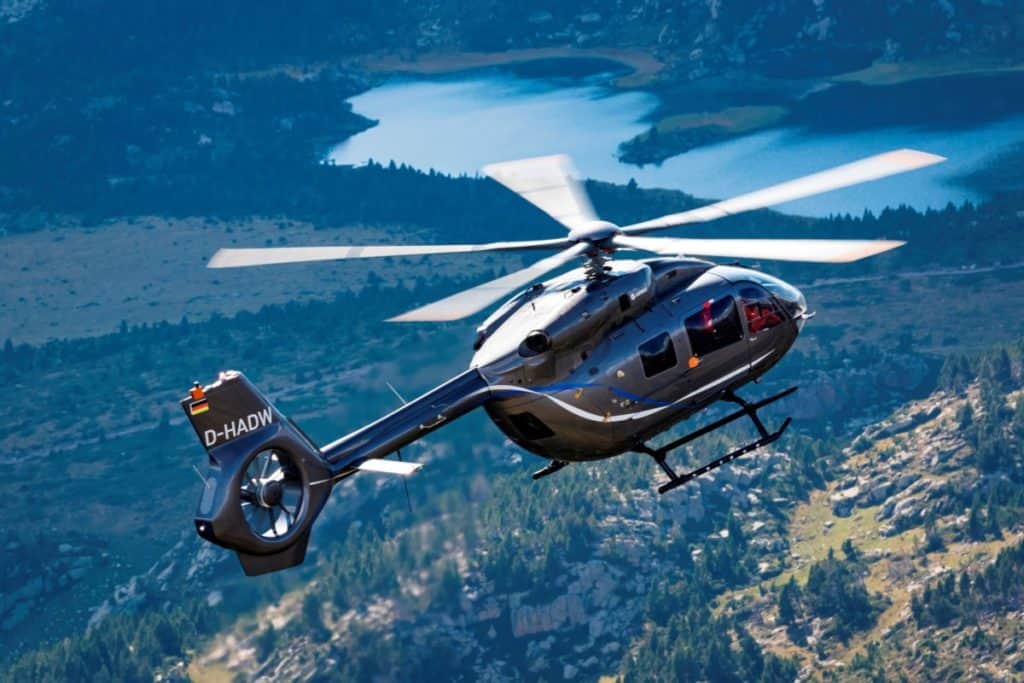
The Fenestron is a Trademarked Anti-Torque system used on many Eurocopter, now Airbus Helicopters.
This anti-torque system works by placing a multi-bladed fan within a duct in the tail of the helicopter. The duct is integrated into the tail boom and is usually made of fiberglass skin. The fan consists of between 8-18 blades, depending on the aircraft model, and is of a much smaller diameter than a conventional tail rotor system.
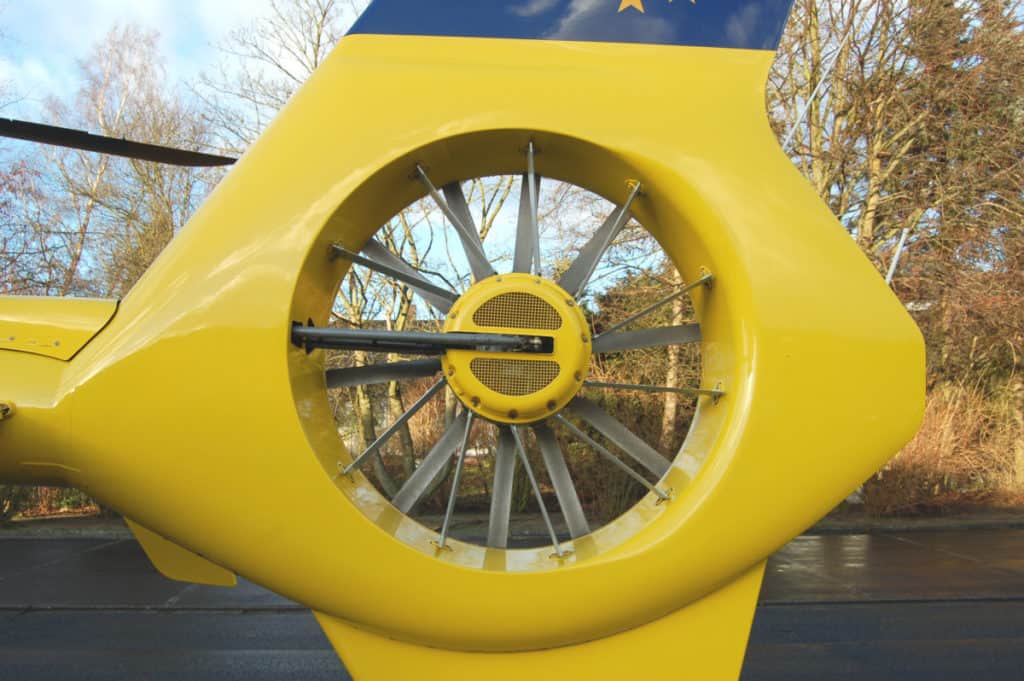
To produce the required amount of thrust Eurocopter chose to have many small blades and rotate them faster as speed and surface area are two variables in the Lift formula.
Controlling the thrust of the Fenestron is done the same way as the conventional tail rotor system. The pilot changes the pitch of all the Fenestron blades together using the foot pedals in the cockpit. A mechanical and hydraulic linkage connects the two.
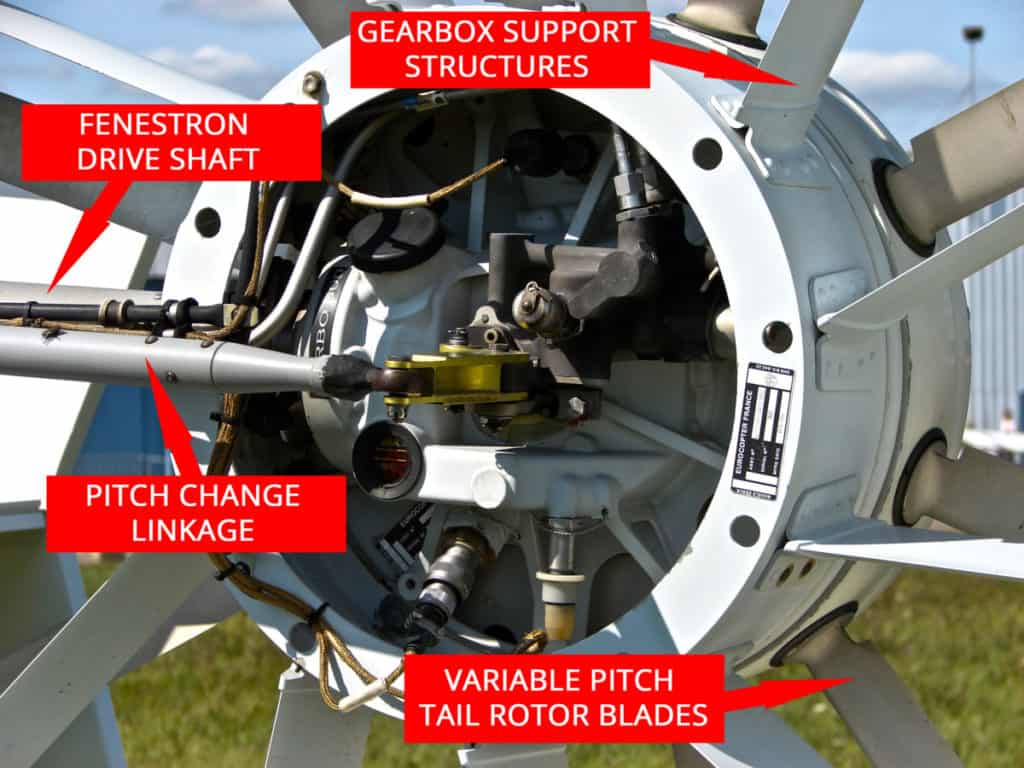
The Fenestron design allows for several improvements over a regular tail rotor:
- Smaller tip vortices on the ends of the fan blades help maximize the thrust produced
- Huge reduction in noise compared to a traditional tail rotor
- The shrouded design allows a safer working area for crews with rotors turning
- Shrouded design helps minimize tail rotor strikes when landing at unprepared helipads
3. The NOTAR System
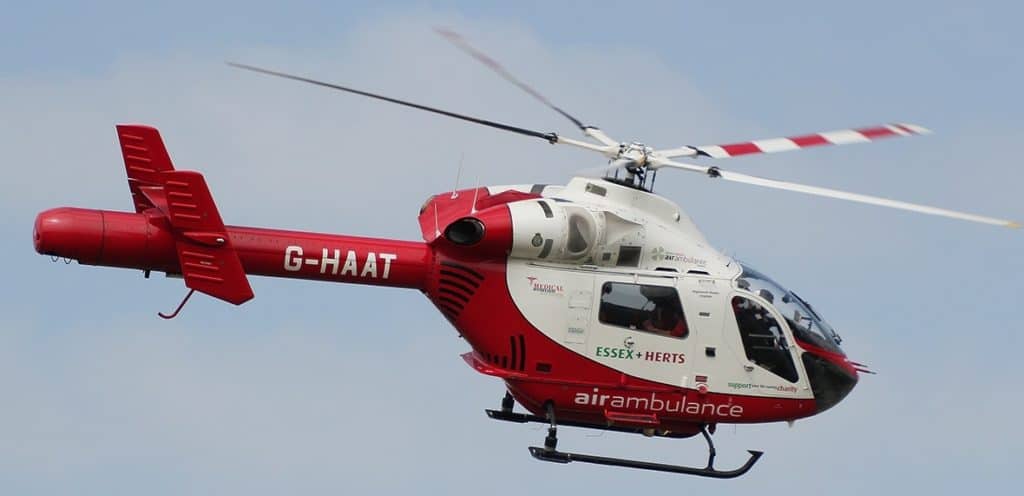
NOTAR stands for No Tail Rotor and it is exactly that. Developed by Hughes Helicopters in the 1970s, the patent is now owned by MD Helicopters after their acquisition of Hughes Helicopters in the mid-1980s.
The NOTAR system comprises an engine-driven, variable pitch fan that is mounted perpendicular inside the tail boom to produce large volumes of low-pressure air that exit through horizontal slots along the right-hand side of the tail boom and via a rotatable ‘Jet Thruster’ at the end of the tail boom.
As power is increased when the collective is raised, the pitch on the fan blades is increased to produce more airflow to counteract the increased torque.
- Air Intake for Fan
- Variable Pitch Fan
- Tail boom with Horizontal Coanda Slots
- Vertical Stabilizers
- Direct Jet Thruster
- Main Rotor Downwash Path
- Cross-Section of Tail boom
- Anti-Torque Thrust
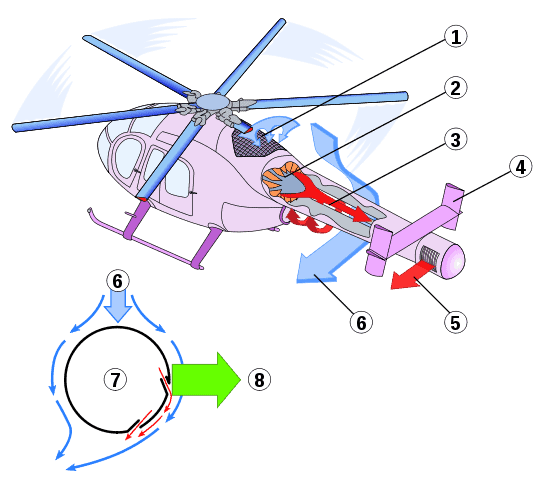
The low-pressure air released down the length of the tail boom creates a Coanda Effect around the tail boom which acts as a venturi to pull the downwash from the main rotor around the tail boom and exit off to the left.
This creates an area of low pressure on the right-hand side of the tail boom, pulling the entire tail boom to the right, and counteracting the torque from the main rotor.
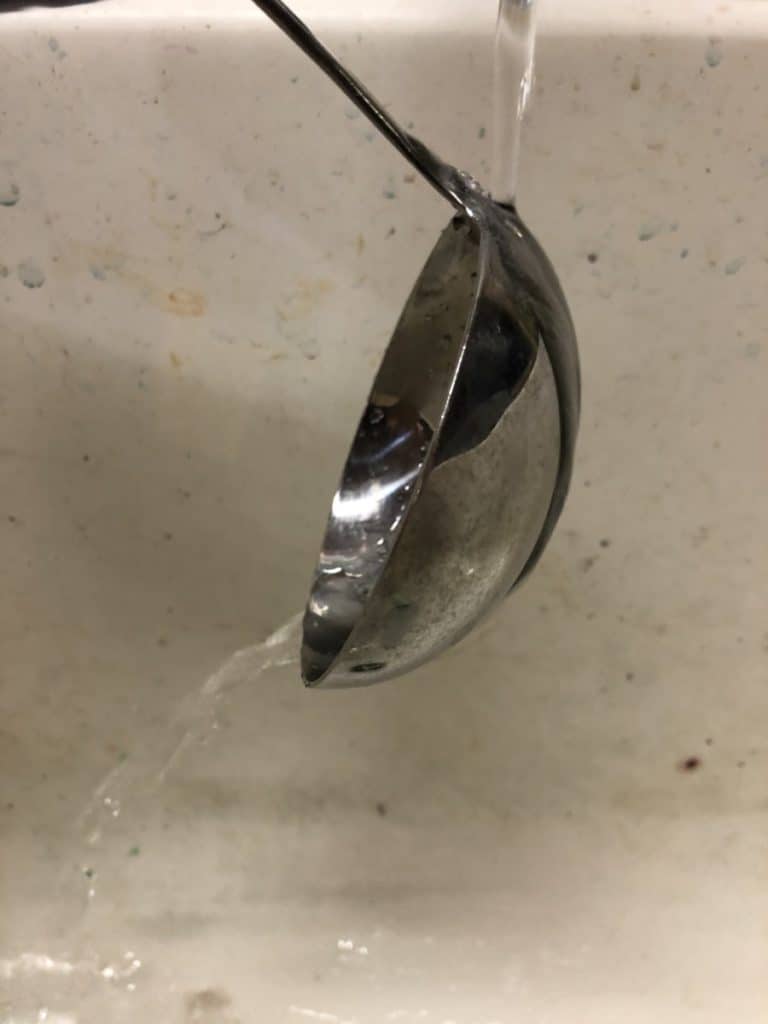
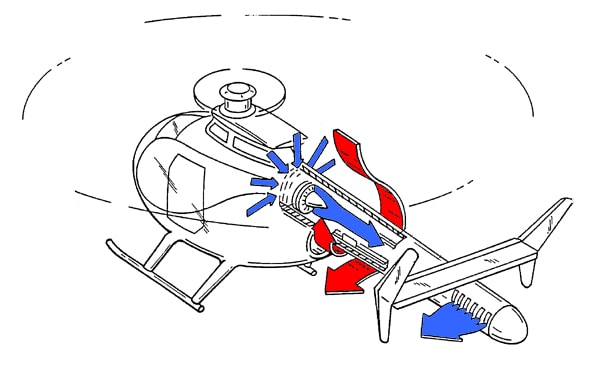
Directional control is accomplished when the pilot pushes on the foot pedals. These are linked to a rotating drum on the end of the tail boom and movable vertical stabilizers.
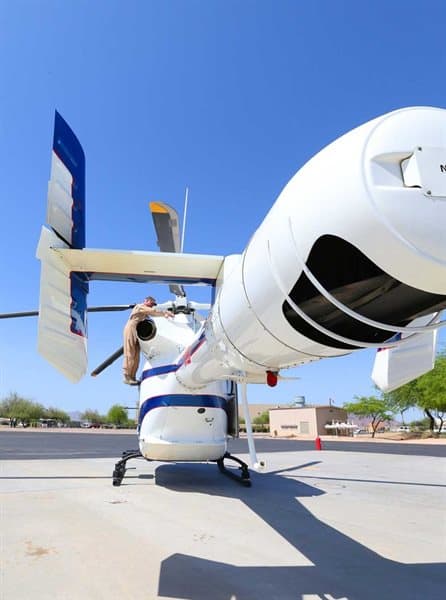
In the hover, the Jet Thruster is enough to increase thrust or decrease thrust produced by the tail boom to allow the aircraft to rotate as required by the pilot. When in forward flight the moveable vertical stabilizers act like a rudder to help move the tail.
The feel of this type of system feels ‘Spongy’ to the pilot rather than sharp like the typical tail rotor.
Just like the Fenestron, the NOTAR system gives similar improvements over a standard tail rotor:
- Quietest Anti-Torque system on any helicopter
- No external rotating parts allow for improved working safety around aircraft.
- No rotating parts to hit when landing at unprepared landing sites.
4. No Tail Rotor System
When a helicopter has two sets of main rotors the designers make each set rotate in opposite directions. By doing this they each cancel out the torque imparted by the other rotor disk.
Because of this, no additional anti-torque system is needed on a tail boom. Directional control is accomplished by changing the pitch on each rotor disk similar to the way the cyclic changes the disk pitch on a single main rotor helicopter.
There are several designs you may see flying around the skies:
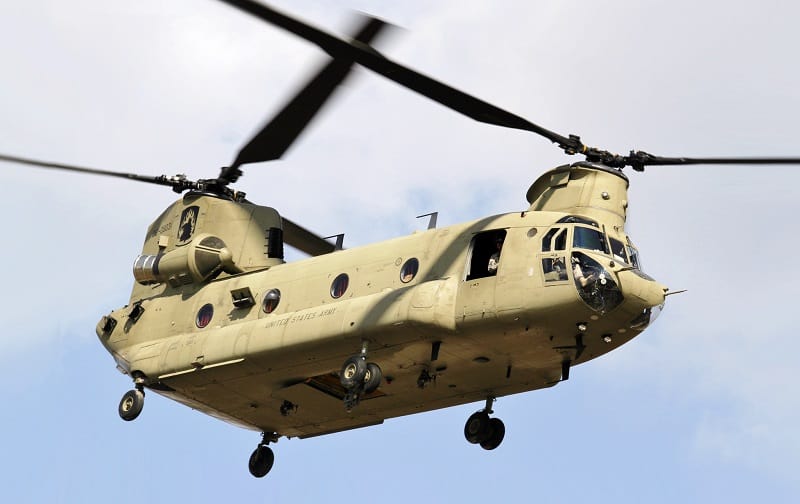
Longitudinal Main Rotors like those on the CH-47 Chinook intermesh so the blades never make contact.
Lateral Main Rotors like those on the Kaman K-Max also intermesh so the blades never make contact.
They are mesmerizing to watch especially on startup!
Stacked Main Rotors are a common site on Kamov (now Russian Helicopters) helicopters.
The two main rotors are stacked and the gearbox and flight controls are some serious engineering if you get close enough to see one!
To Finish
No matter what type of helicopter is flying they all need some form of anti-torque system to prevent the fuselage from spinning around. The mechanical genius’ that have created the technical wonders you have just read about really do give helicopter operators a vast choice of systems to pick from.
When flying in the bush I am always ‘Flying The Tail’ and what this means is putting my tail rotor in the clear spot so it does not contact any weeds or small trees. To have a Fenestron or NOTAR system would really make my life easier, but they come at a cost!
Header Image:
NASA’s new Airbus H135 – Courtesy: Airbus Helicopters

